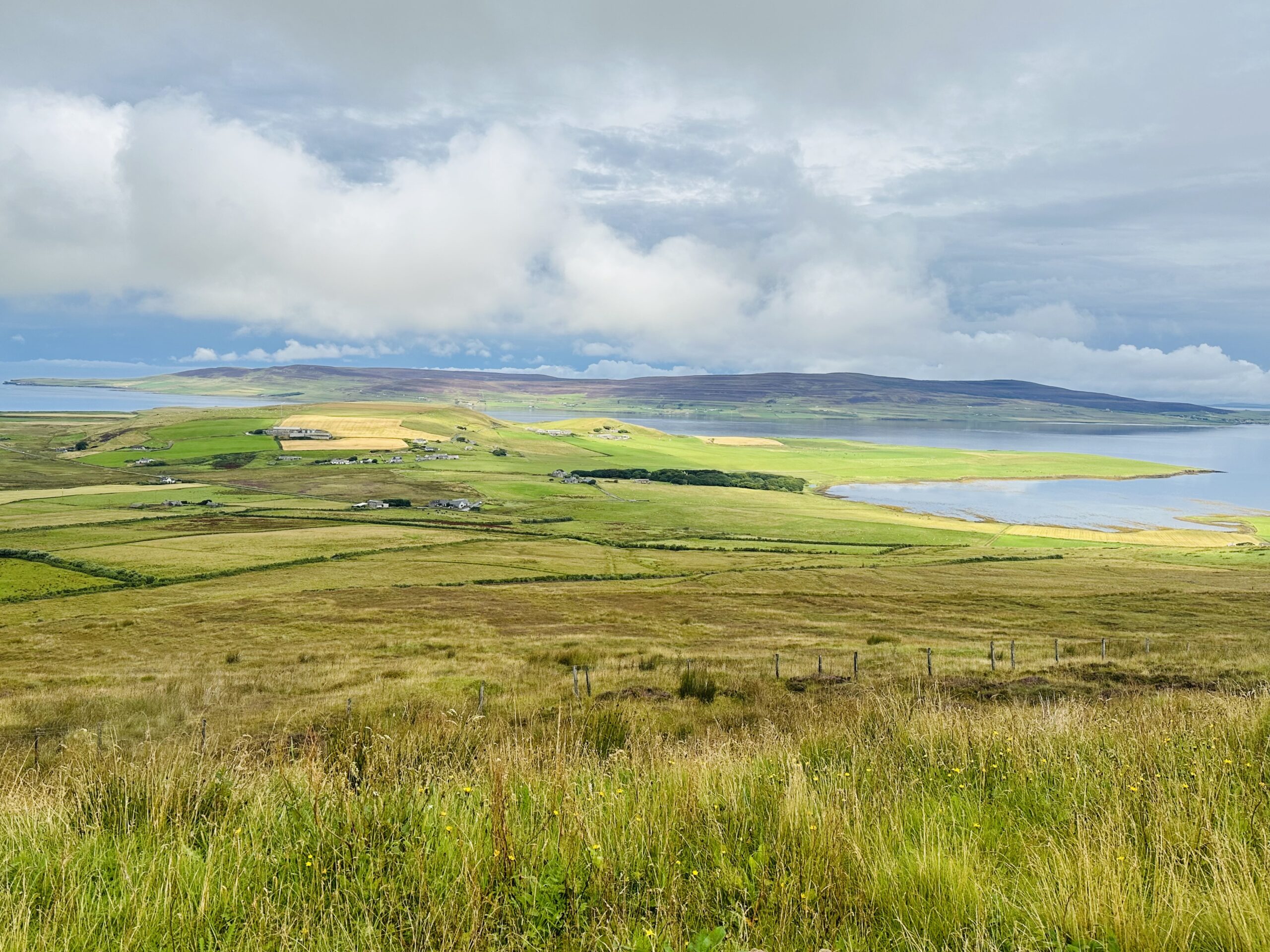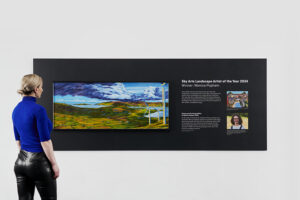In 2024 the Science Museum Group was proud to work with Sky Arts’ Landscape Artist of the Year competition. As this series’ collaborating institution, we asked the competition’s winner, artist Monica Popham, to paint a work that captures the story of Orkney’s role in the UK’s transition to low carbon and renewable energy.
Orkney and the Energy Within by Monica Popham was on display in the Science Museum between February – October 2024.

To capture the view, Popham stood on Hammars Hill Wind Farm next to the three turbines in the foreground, looking across the vista towards the island of Eynhallow. If you want to visit the same location, you’ll want to wrap up warm – Orkney has high winds all year round, but the turbines to the right, and speckled through the landscape, have played a key role in enabling residents to harness this renewable energy. They are prominent throughout the islands.

Popham’s choice of viewpoint also captures a second source of renewable energy a little less visible. Eynhallow Island is renowned for its turbulent tides, a source of energy also well harnessed by Orcadians. The islands are a perfect testing site for new technologies to harness tidal and ocean power, including tidal stream turbines.
Jessica Bradford, Head of Collections & Principal Curator at the Science Museum, said, ‘We think Popham’s work, Orkney and the Energy Within, demonstrates with brio Orkney’s pioneering renewable energy industry, whilst capturing the bracing beauty of the islands’ pristine landscape.
Everywhere we look, Popham has captured movement and energy. Rolling clouds, mottled shadows across undulating fields, the shimmering sea and bold upright wind turbines all catch our eye, which can hardly settle on one spot. Though the scene is beautiful, we still get a strong sense of the islands’ underlying momentum in embracing renewables’.

The Orkney islands off the north eastern coast of Scotland are known for their wildlife, dramatic coastlines and their deep history. Neolithic sites scattered across the islands, many 5,000 years old, were bustling before either Stonehenge or the Pyramids were built. The landscape is a haven for wildlife, from nesting seabirds along its cliffs to a vibrant array of plants across rolling meadows.
In seeking to protect this ancient and natural inheritance against the impact of climate change, Orkney’s residents have been looking to the future. Once dependent on fossil fuels from the Scottish mainland for energy, in recent decades Orcadians have been leading the way in embracing the renewable energy industry.
Over 100 percent of the islands’ electricity is generated by local renewable sources. By comparison in 2022 the UK overall averaged 40 percent.

The islands might be closer to the Arctic Circle than they are to London, but through the work, we are transported from urban South Kensington to a fresh, bracing view of these unique and forward-thinking islands.
Orkney and the Energy Within by Monica Popham was on display in the Science Museum between February – October 2024.
This blog post was updated in October 2024 to note the artwork is no longer on display at the Science Museum.
